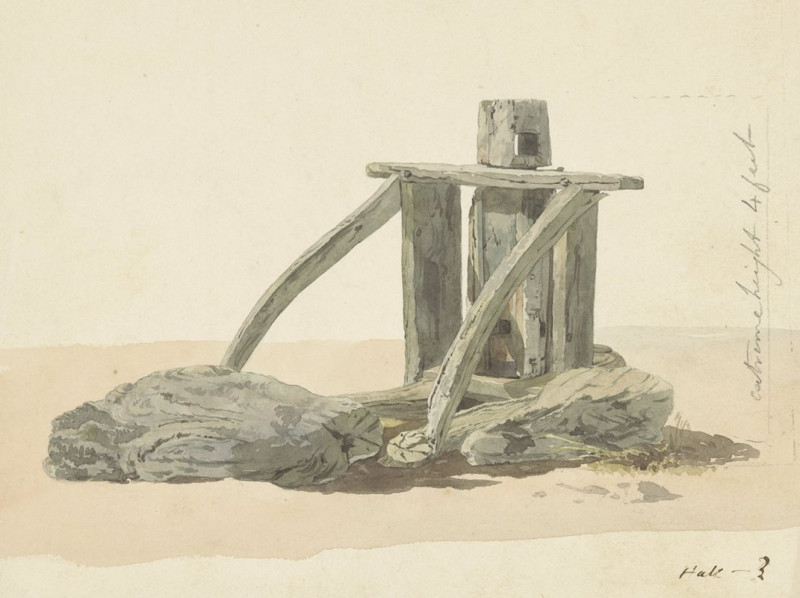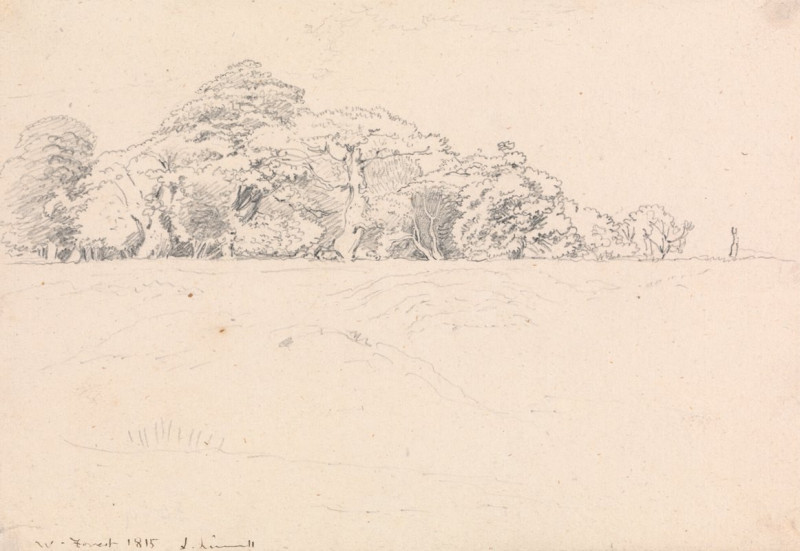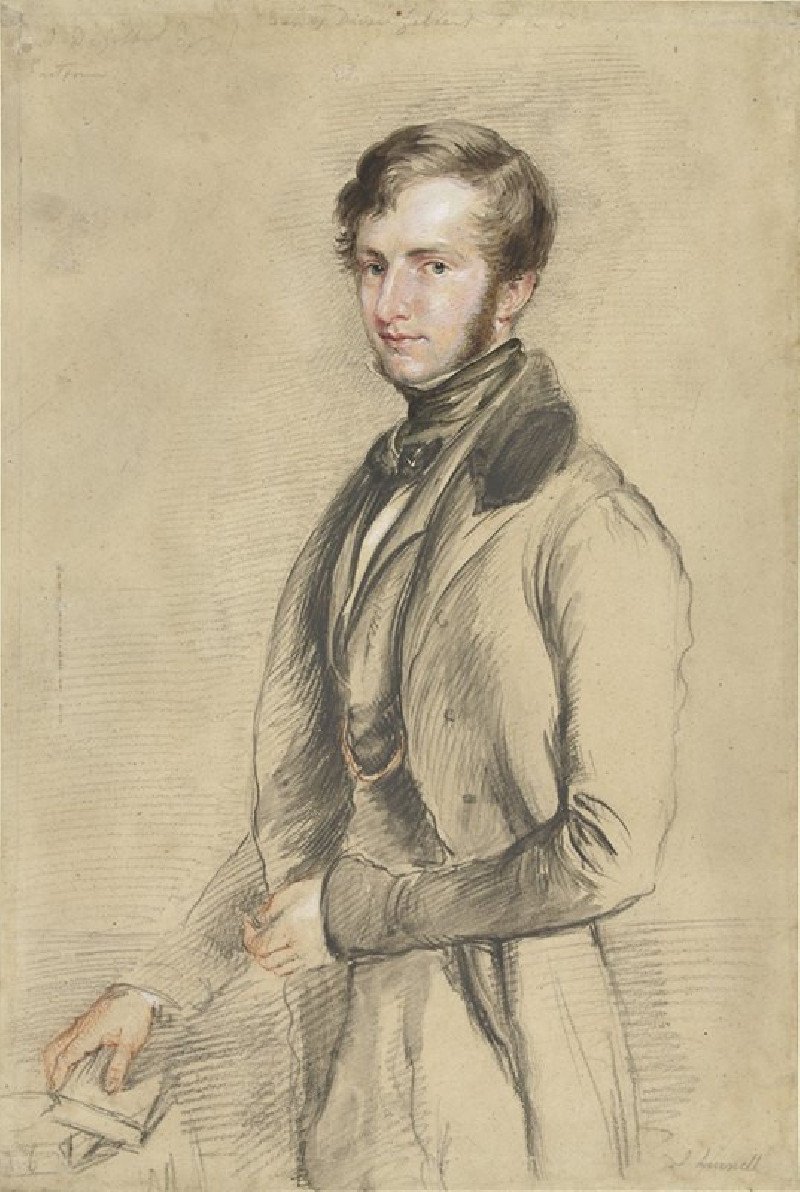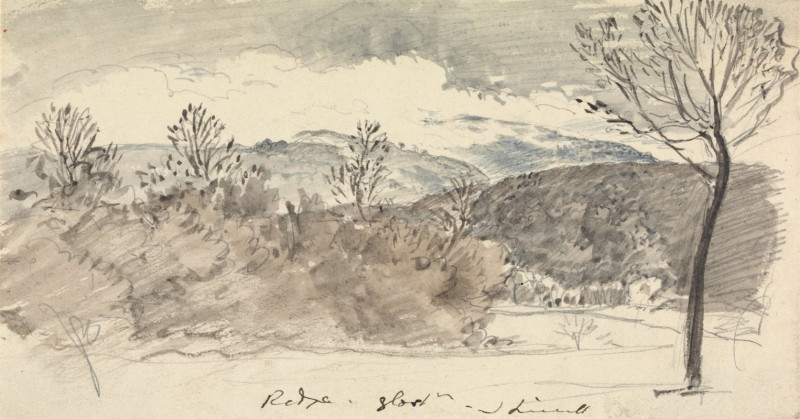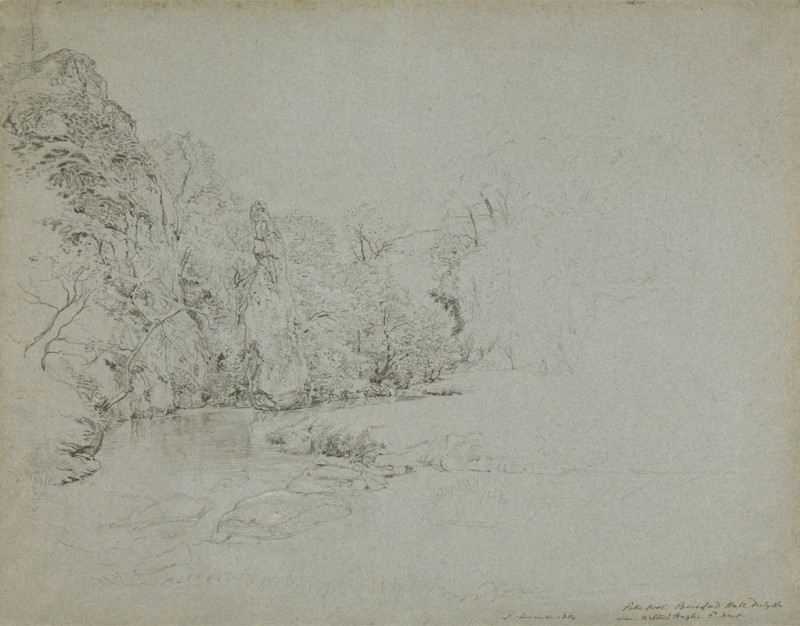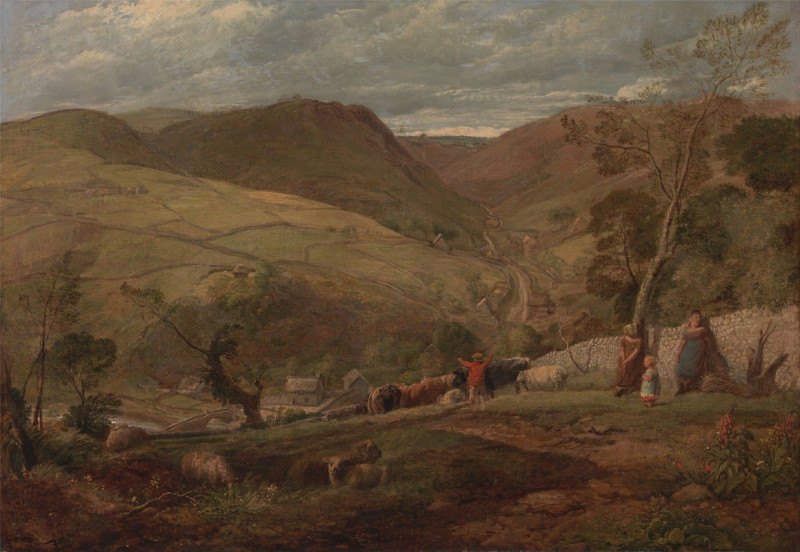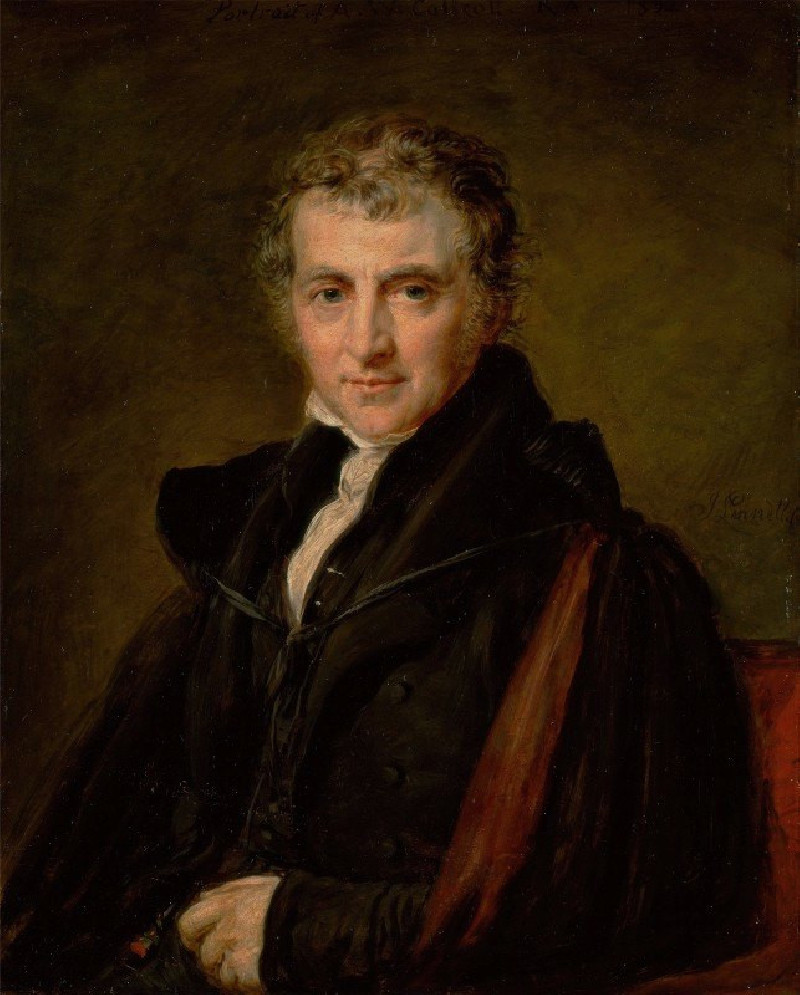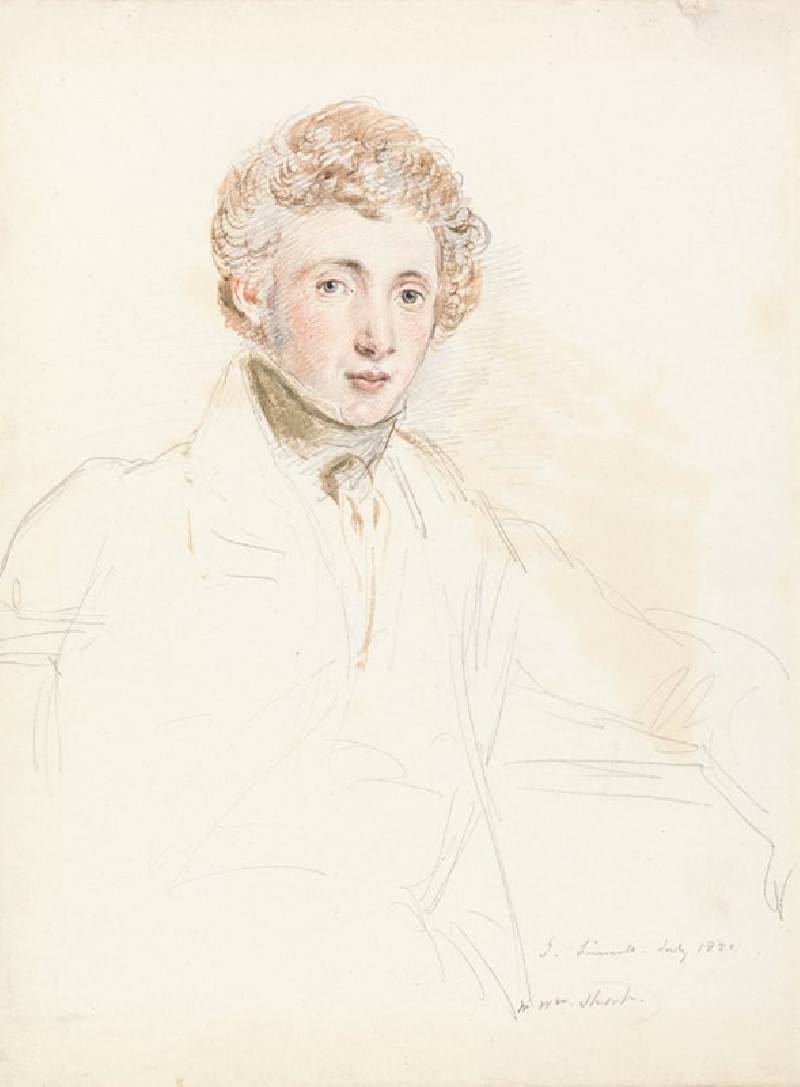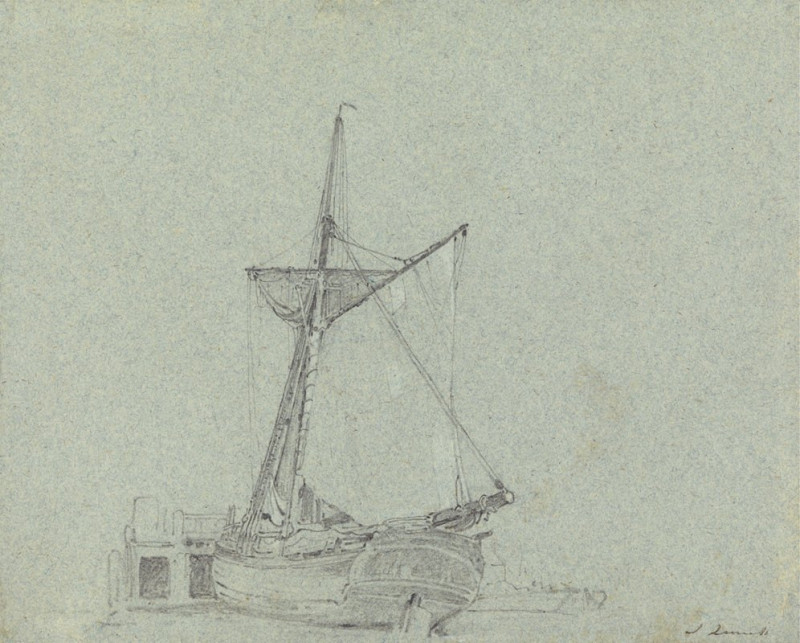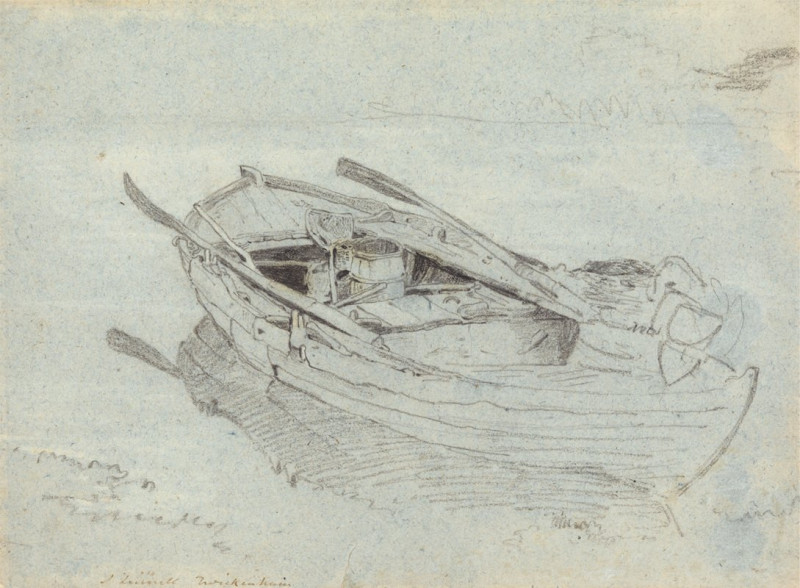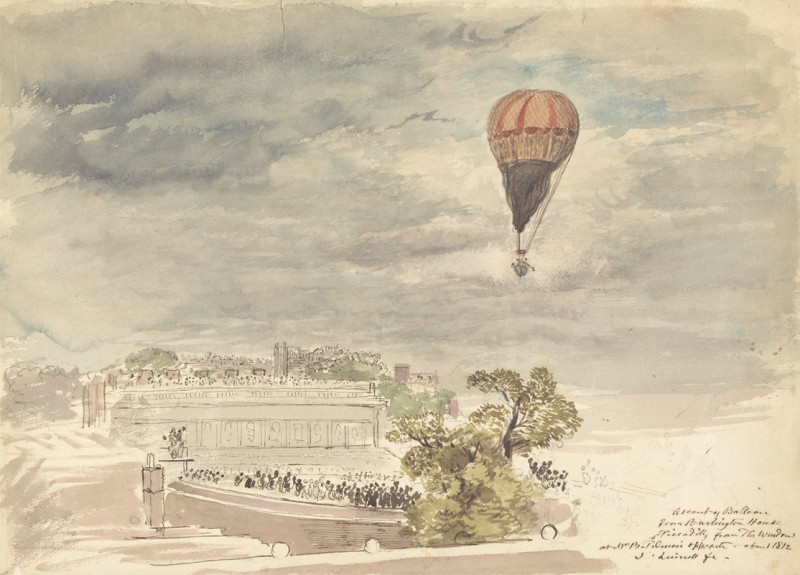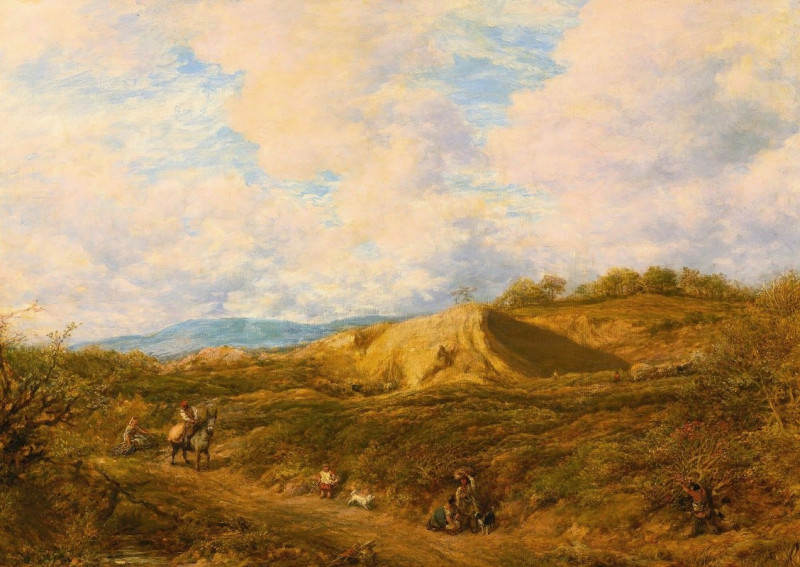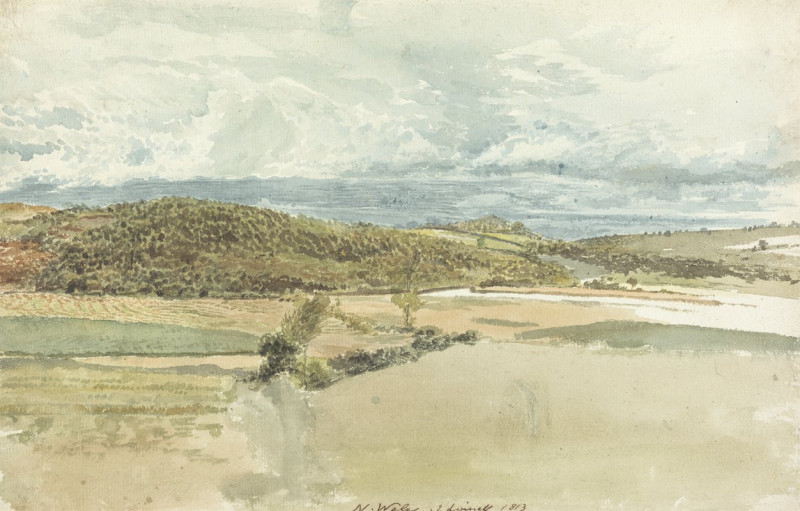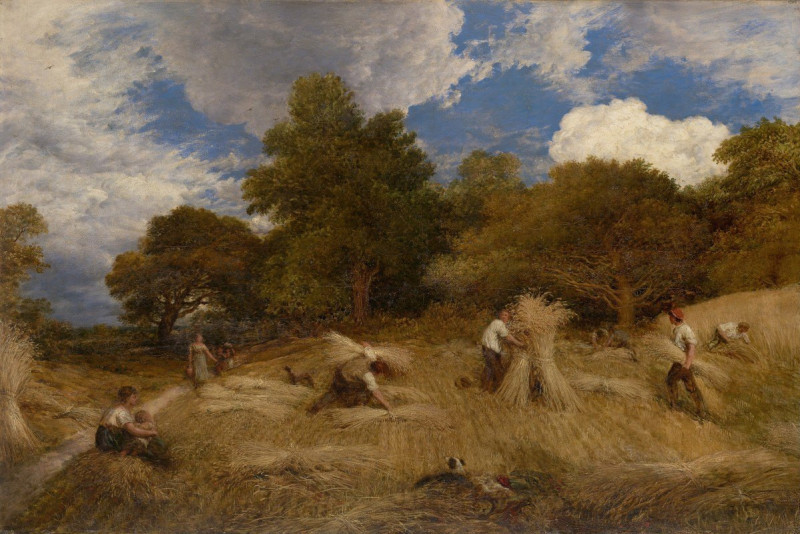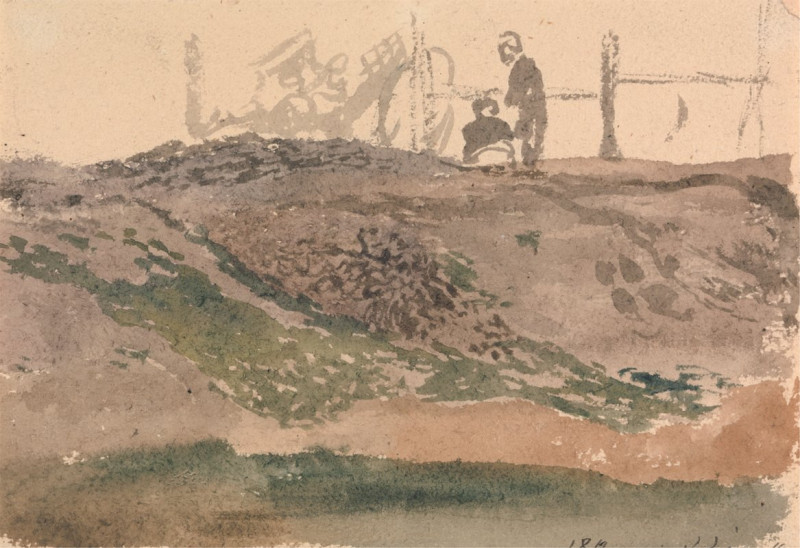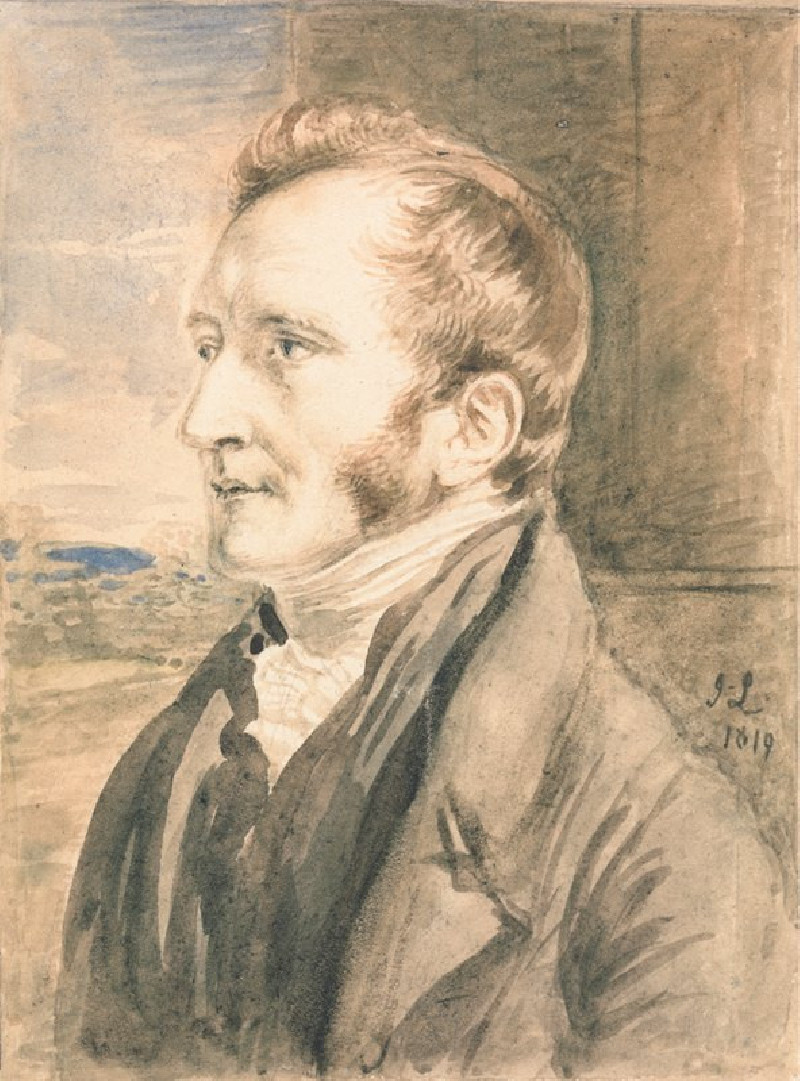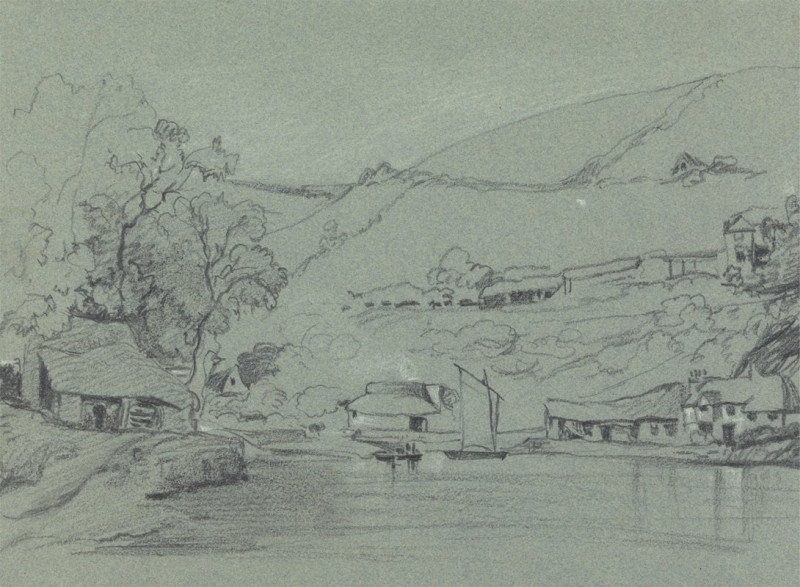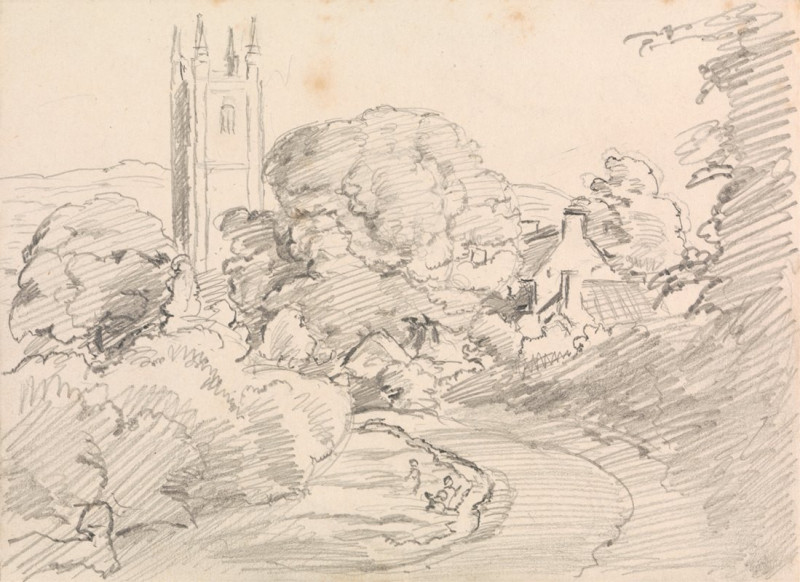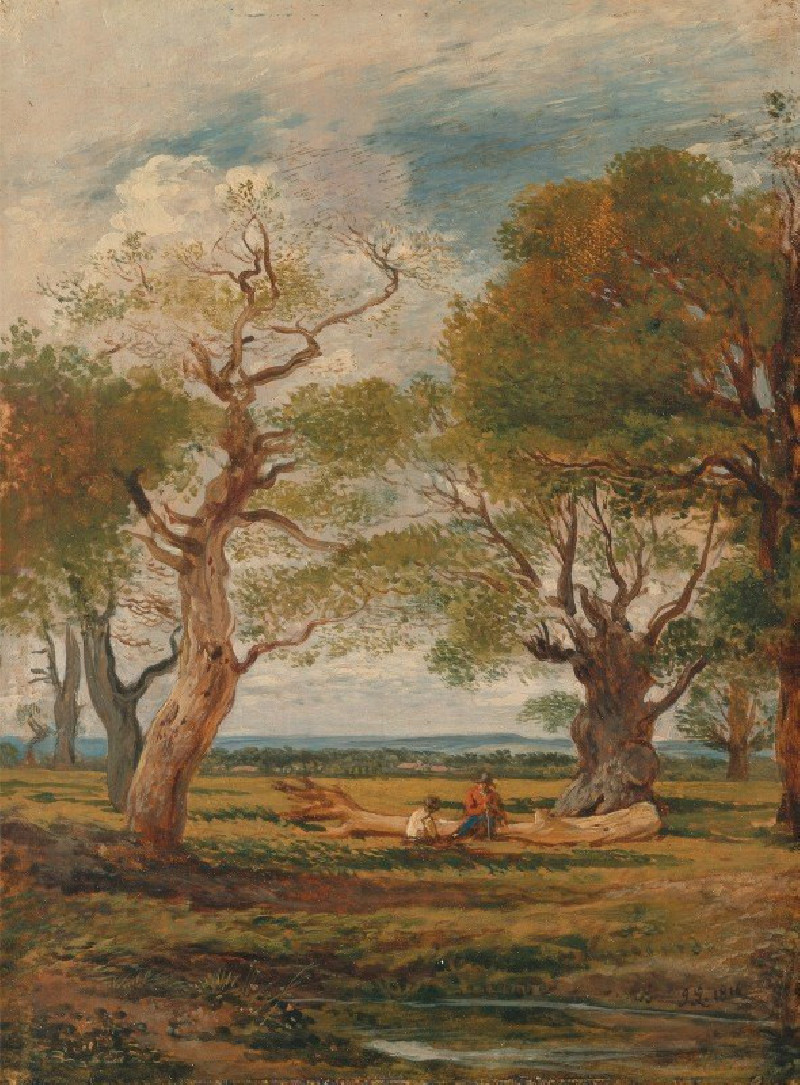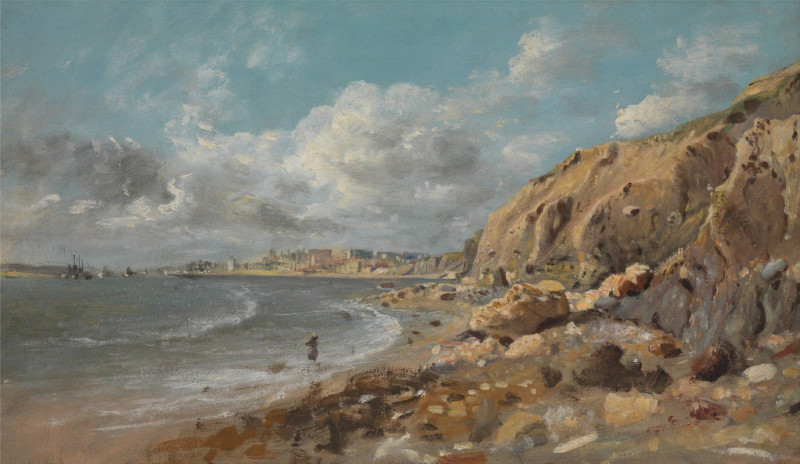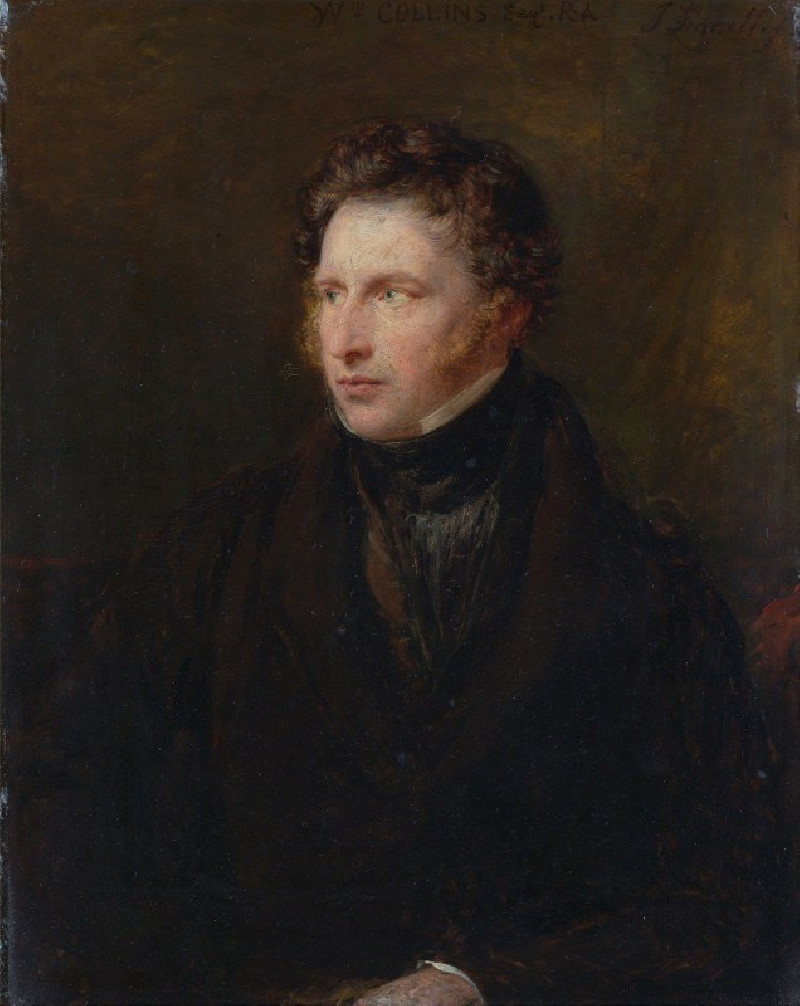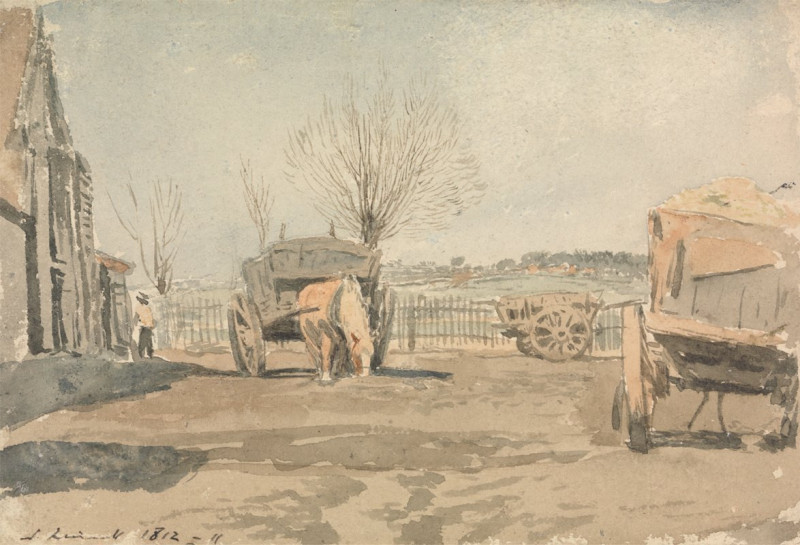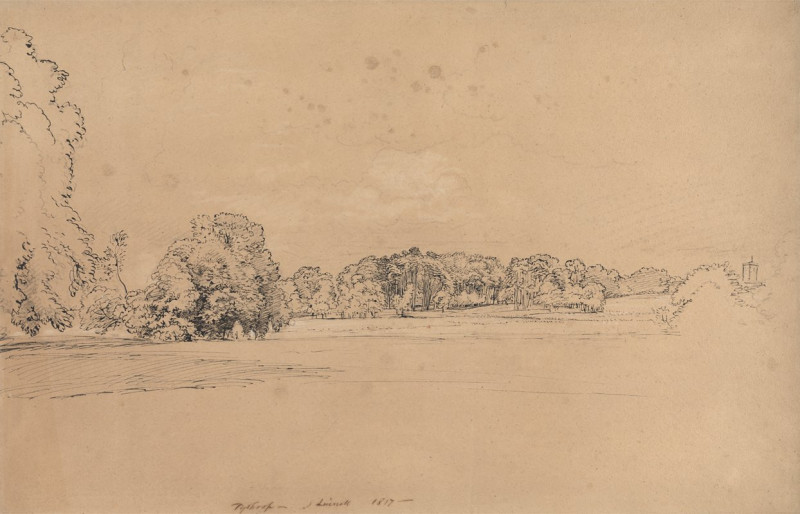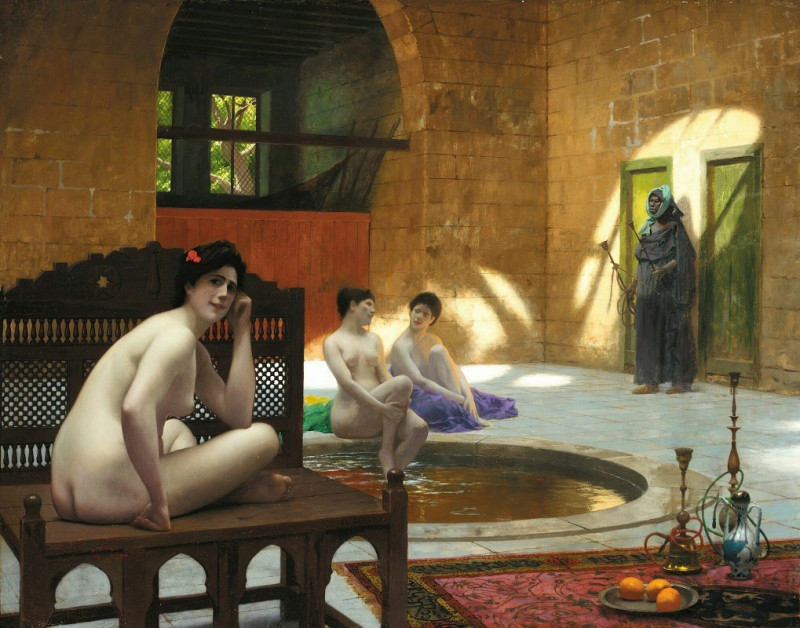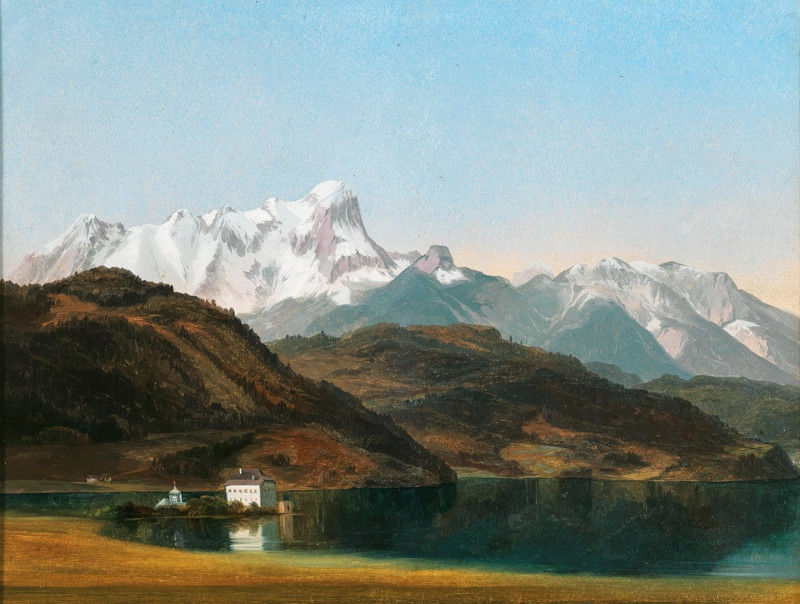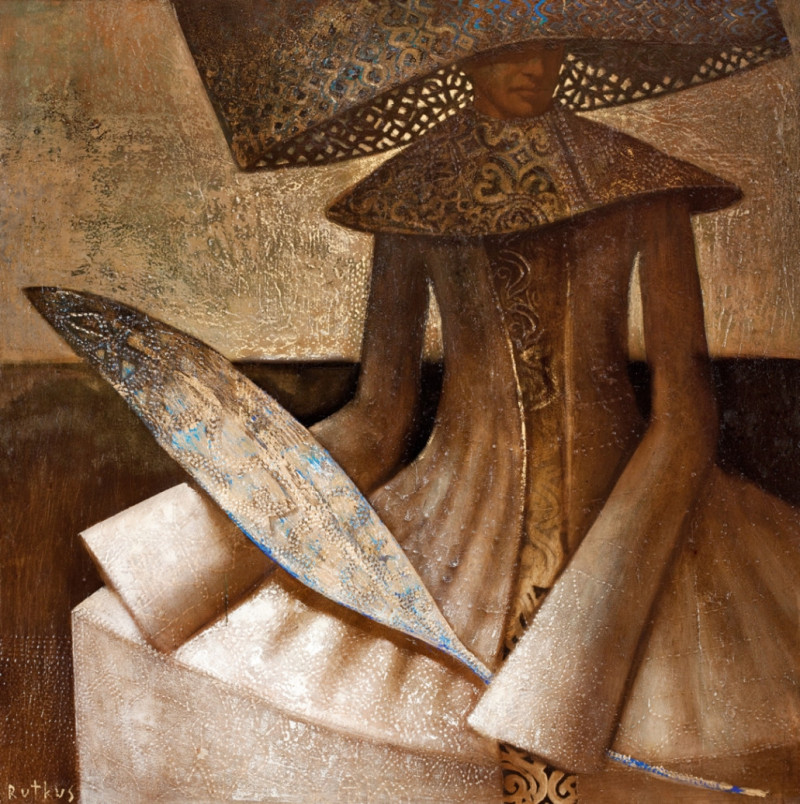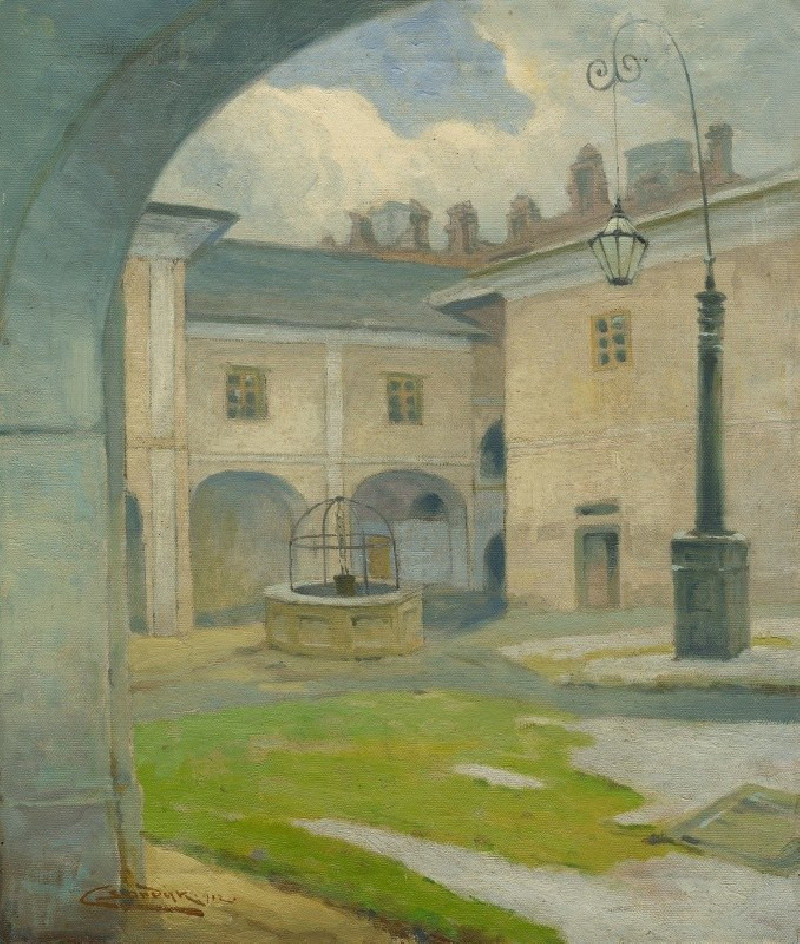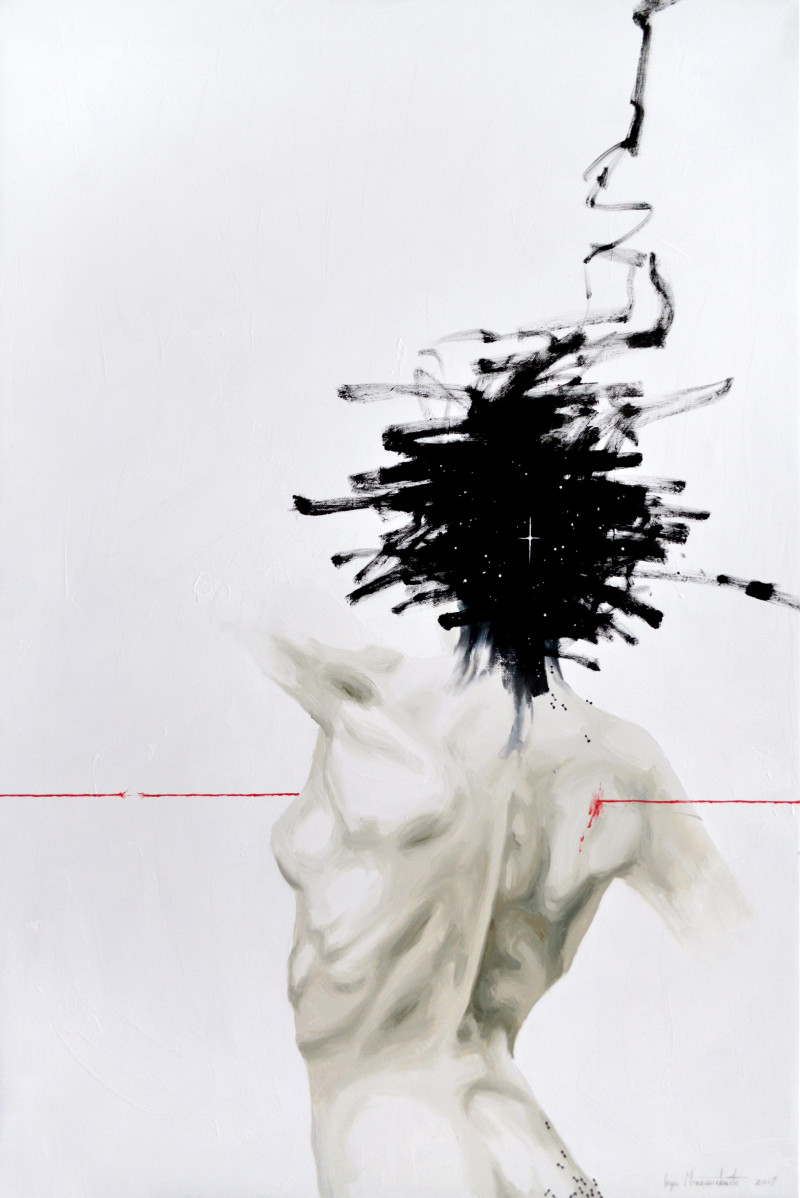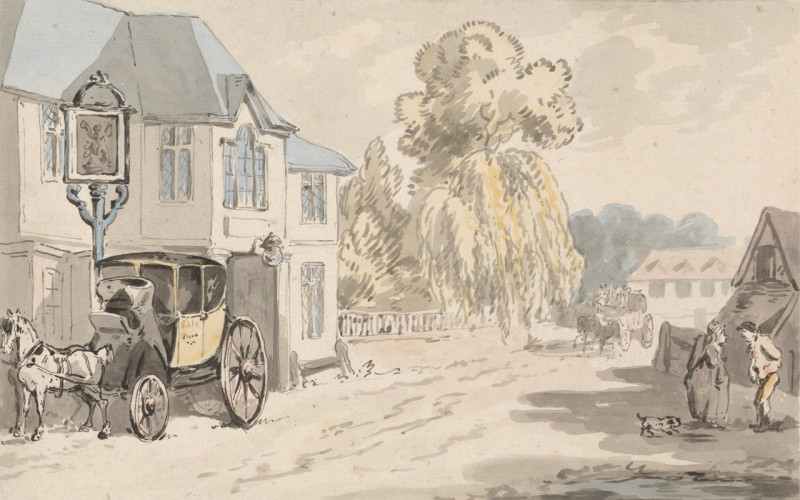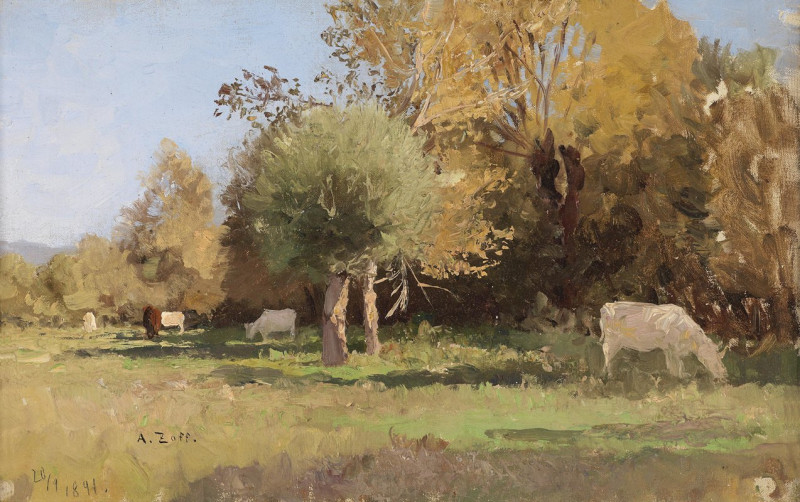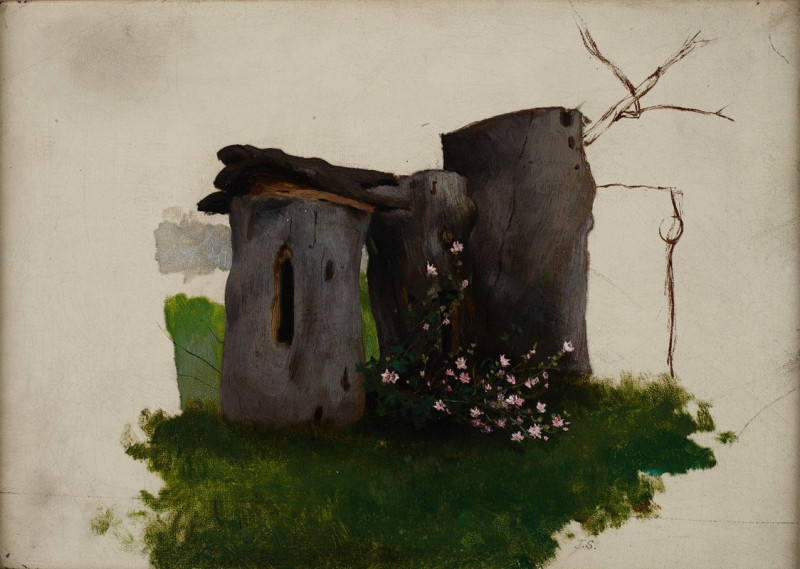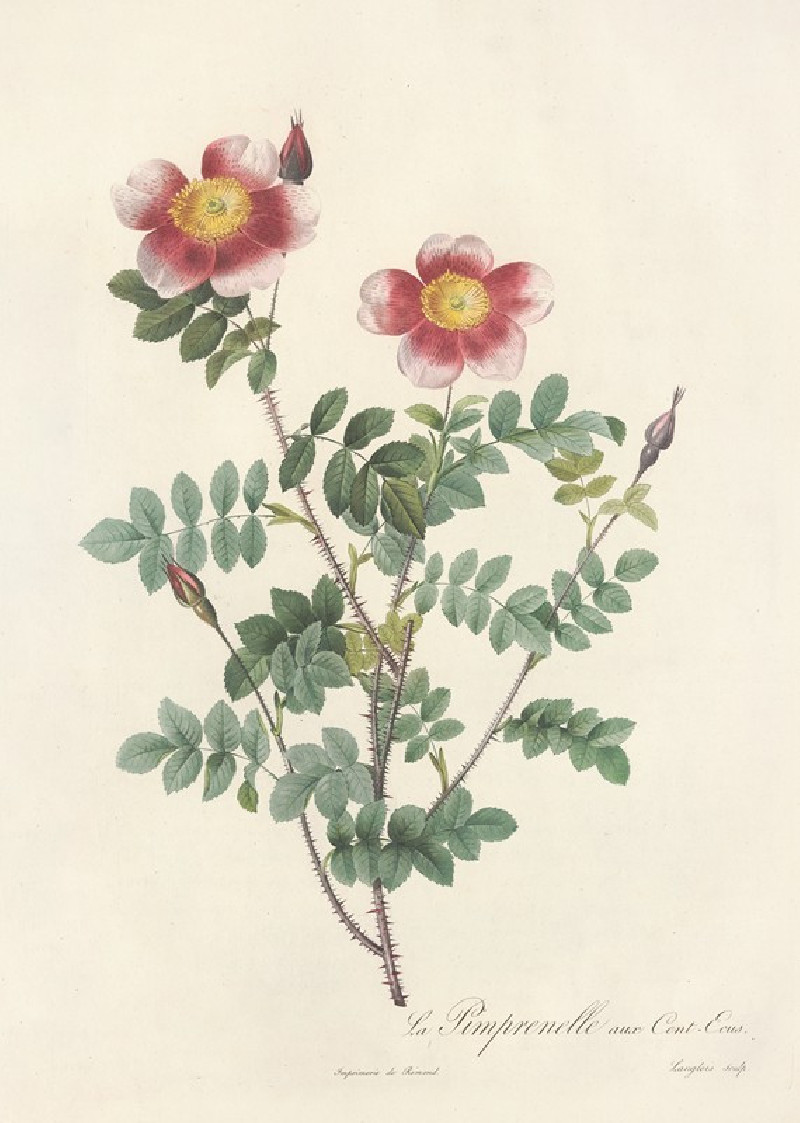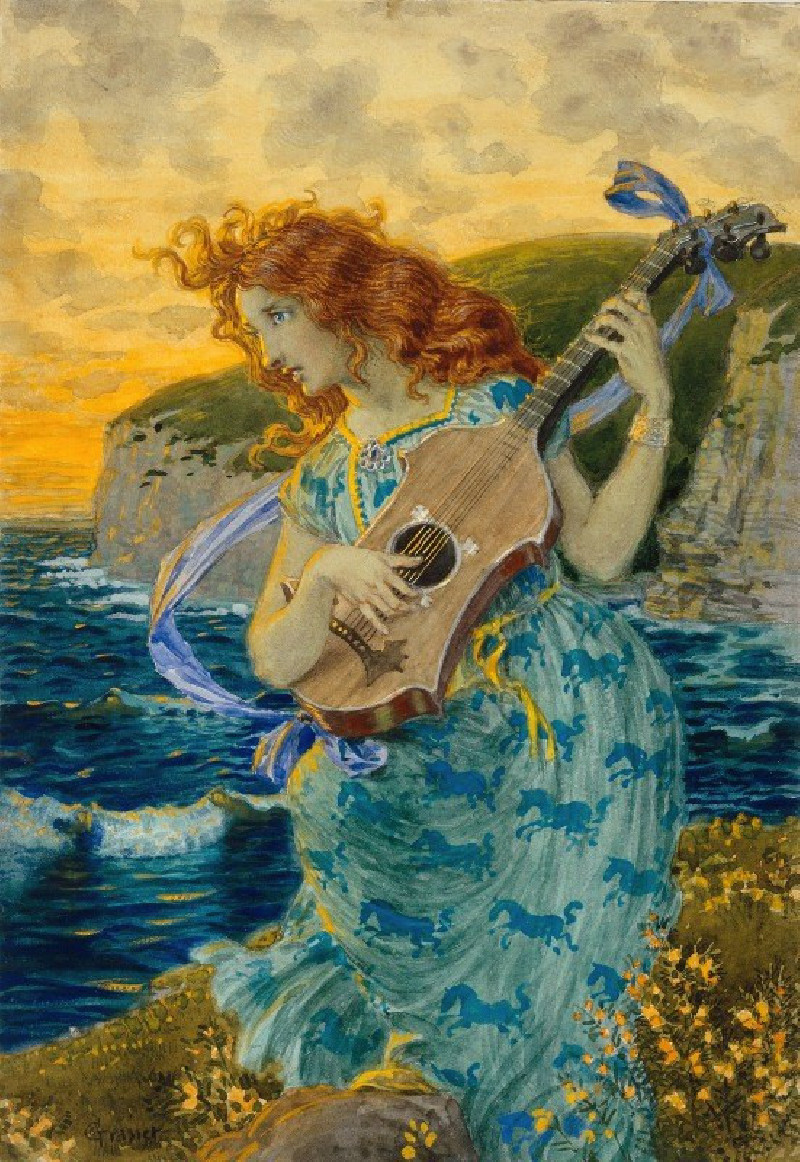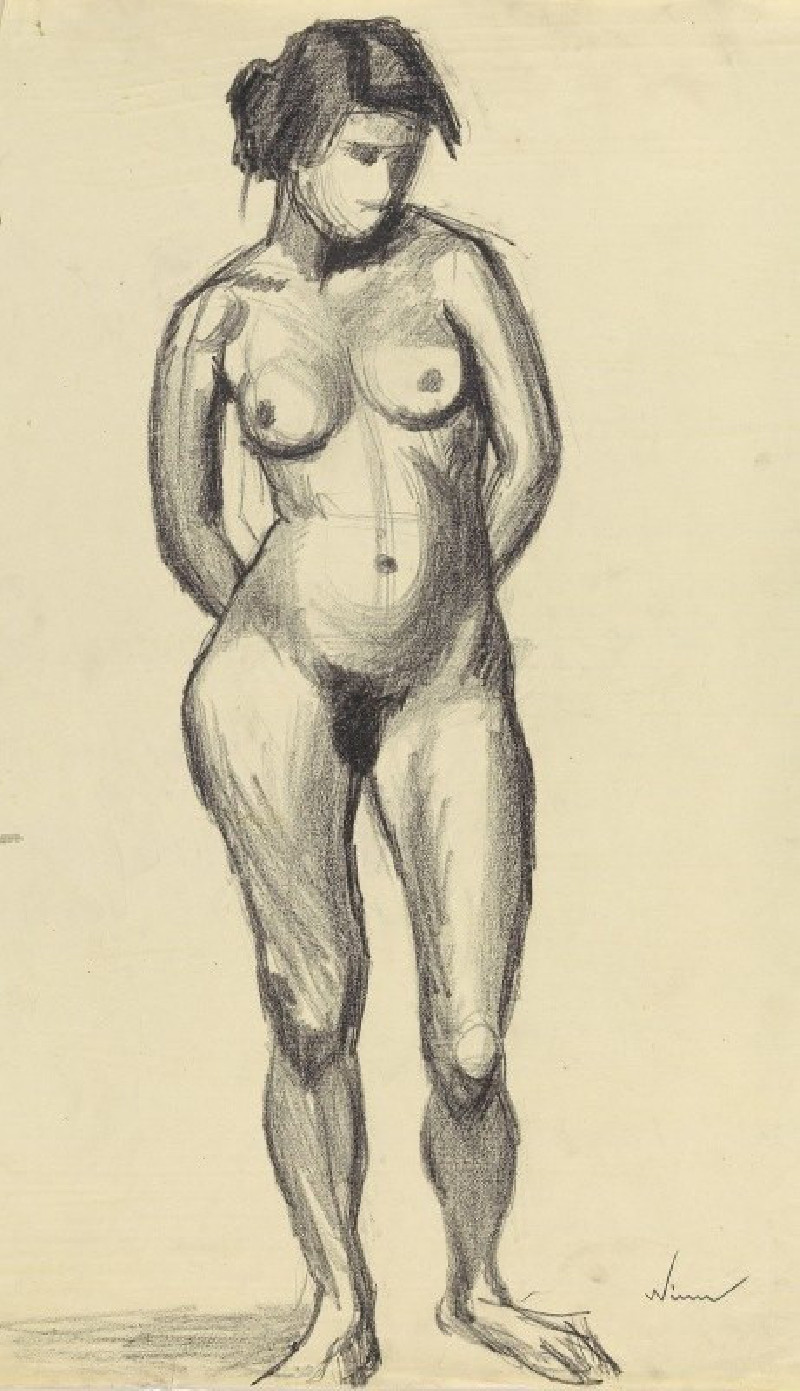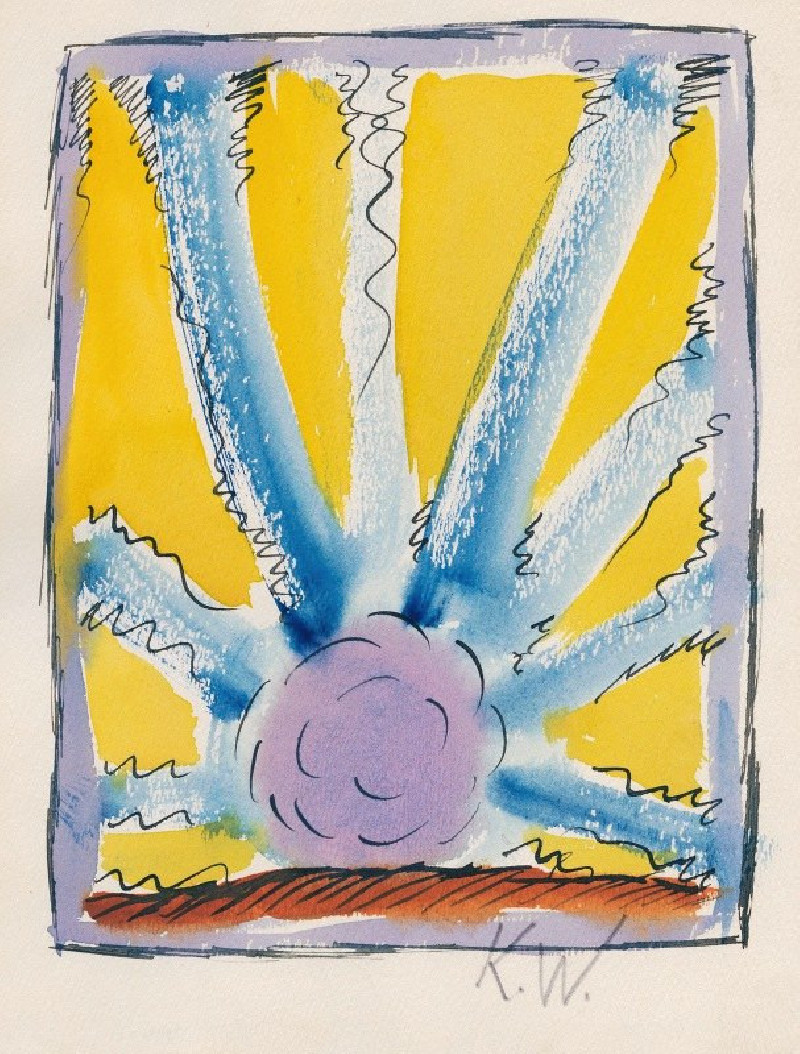Cape Town Beach Stand (1802 - 1882)
Technique: Giclée quality print
Recommended by our customers
More about this artwork
Titled "Cape Town Beach Stand," this delicate watercolor by John Linnell, dating from the period between 1802 and 1882, invites viewers into the simplicity of maritime life in the 19th century. This painting captures an understated, rustic scene featuring a wooden beach stand, possibly a part of ship dismemberment or a rudimentary coastal structure. The stand, consisting of weathered wood beams and a block atop, emerges from the soft tones of the sand, accompanied by the smooth boulders that gently rest against its frame.Linnell's use of muted, earthy colors and light washes adds a sense of tranquility and timeless grace to the image, emphasizing the subtle interplay between man-made objects and the natural environment. The restrained color palette and the focus on structural details over scenic expansiveness reflect a moment of peace, perhaps hinting at the contemplative isolation one might feel standing alone on a vast shore.
Delivery
Returns
John Linnell was an English engraver, and portrait and landscape painter. He was a naturalist and a rival to the artist John Constable. He had a taste for Northern European art of the Renaissance, particularly Albrecht Dürer. He also associated with Edward Thomas Daniell, and with William Blake, to whom he introduced the painter and writer Samuel Palmer and others.

